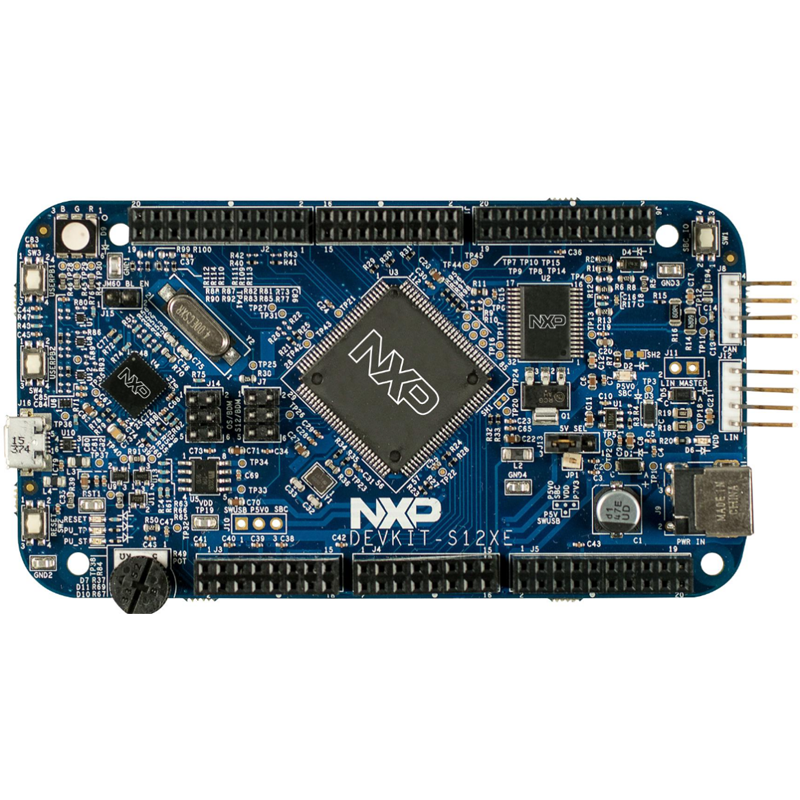Best NXP MCU Boards – Top 10 Options
Details
NXP MCU board. NXP Arm® Cortex®-M4 Based Microcontrollers – LPC Family
The LPC microcontroller based on the Arm® Cortex®-M4 core can run at a clock frequency of up to 204MHz, achieving a higher level of system integration and excellent energy efficiency.
While helping customers reduce design cost and complexity. Some of these products feature a Cortex®-M4 processor with built-in floating point unit. The LPC portfolio consists of 3 based.
A family of Cortex®-M4 cores with single-core and multi-core architectures that support efficient application module partitioning and adjustable power performance.

LPC4000 Series: High Speed Multiple Connections Advanced Peripherals Based on the Cortex®-M4/M4F core, the LPC4000 series can support Multiple interfaces for peripherals such as Ethernet, USB (host or device), CAN, and LCD display.
Synchronous high-bandwidth data streams. LPC4000 with LPC177x/8x and ARM7LPC2x00 family of products are pin compatible with SPI flash interface (SPIFI), which can seamlessly connect with low-cost QSPI flash memory at high speed. SPIFI to high Cost-effective way to add megabytes of program or data flash memory to your system in the system. LPC4000 digital signal control (DSC) processor for design engineering division brings high-performance signal processing capabilities. These DSC processor system sets high density, which reduces the cost and complexity of system design while using a a single toolchain to simplify the design cycle. The LPC4000 series combines a micro The advantages of the controller and single-cycle MAC, single instruction multiple data (SIMD) technology High-performance digital signal processing functions such as arithmetic, saturation arithmetic and floating point unit (FPU) able.
Applications
➢ Applications that require externally expanded SDRAM or different flash memory configurations
➢ Embedded products that require color LCD display
➢ Occasions that require digital signal control
LPC4300 series: multi-core, high performance, multiple interconnection
The LPC4300 series combines an asymmetric dual-core architecture (Arm® Cortex®-M4F and Cortex®-
M0) high performance and flexibility, as well as a variety of high-speed connectivity options, advanced timers, analog;
Optional security features to secure code and data communications. DSP functions enable all
The LPC4300 series can support applications based on complex algorithms. Flash and no-flash options
Supports flexible internal and external mass memory configurations. Its pins and software are the same as those of the LPC1800 series
Compatible with a series of products, providing the convenience of seamless upgrades to improve processing performance, while increasing the
The flexibility to allocate application tasks reasonably among different cores.
The LPC4300 architecture uses two cores, a complex
Cortex®-M4F processor, plus a Cortex®-M0 coprocessor core. multicore
style, can easily realize split design to maximize efficiency, so that the powerful Cortex®-
The M4F core handles the algorithms, letting the Cortex®-M0 coprocessor manage data movement and I/O processing.
Multi-core mode also reduces time-to-market because design and debug are in a single development environment
Completed. These processor cores are supported by numerous high-performance peripherals, integrated interrupt control
Control functions and low-power modes can bring new methods for embedded engineers to effectively solve complex problems.
complex design issues. According to different requirements, you can flexibly choose whether to need on-chip flash memory.
target application
➢ Display
➢ Industrial Network
➢ Medical diagnosis
➢ Scanner
➢ Alarm system
➢ Motor control
target application
➢ Smart Meter
➢ Embedded audio
➢ POS equipment
➢ Data acquisition and navigation
➢ Industrial automation and control
➢ Vehicle information service
➢ White goods
➢ Electronic Instruments Motor Management
➢ Secure connection gateway
➢ Medical and fitness equipment
➢ Automobile after-sales







